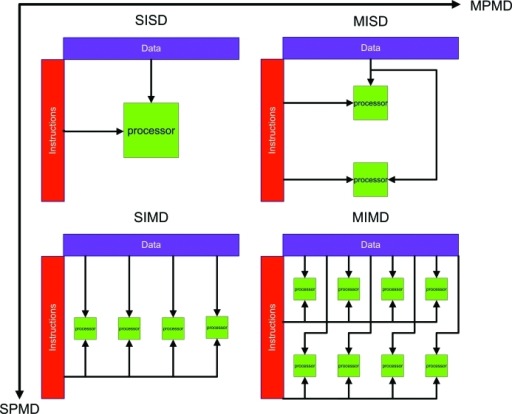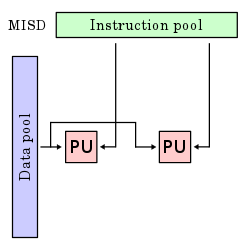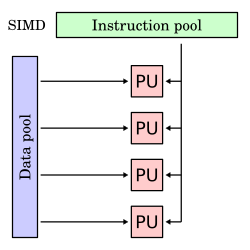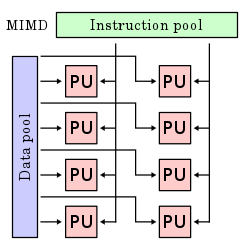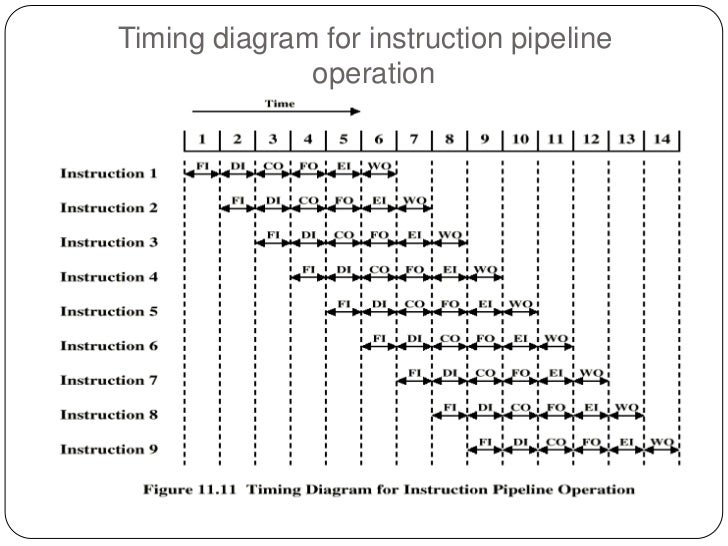Inter Process Communication
A process can be of two type:
- Independent process.
- Co-operating process.
An independent process is not affected by the execution of other processes while a co-operating process can be affected by other executing processes. Though one can think that those processes, which are running independently, will execute very efficiently but in practical, there are many situations when co-operative nature can be utilised for increasing computational speed, convenience and modularity. Inter process communication (IPC) is a mechanism which allows processes to communicate each other and synchronize their actions. The communication between these processes can be seen as a method of co-operation between them. Processes can communicate with each other using these two ways:
- Shared Memory
- Message passing
The Figure 1 below shows a basic structure of communication between processes via shared memory method and via message passing.
An operating system can implement both method of communication. First, we will discuss the shared memory method of communication and then message passing. Communication between processes using shared memory requires processes to share some variable and it completely depends on how programmer will implement it. One way of communication using shared memory can be imagined like this: Suppose process1 and process2 are executing simultaneously and they share some resources or use some information from other process, process1 generate information about certain computations or resources being used and keeps it as a record in shared memory. When process2 need to use the shared information, it will check in the record stored in shared memory and take note of the information generated by process1 and act accordingly. Processes can use shared memory for extracting information as a record from other process as well as for delivering any specific information to other process.
Let’s discuss an example of communication between processes using shared memory method.

Let’s discuss an example of communication between processes using shared memory method.

i) Shared Memory Method
Ex: Producer-Consumer problem
There are two processes: Producer and Consumer. Producer produces some item and Consumer consumes that item. The two processes shares a common space or memory location known as buffer where the item produced by Producer is stored and from where the Consumer consumes the item if needed. There are two version of this problem: first one is known as unbounded buffer problem in which Producer can keep on producing items and there is no limit on size of buffer, the second one is known as bounded buffer problem in which producer can produce up to a certain amount of item and after that it starts waiting for consumer to consume it. We will discuss the bounded buffer problem. First, the Producer and the Consumer will share some common memory, then producer will start producing items. If the total produced item is equal to the size of buffer, producer will wait to get it consumed by the Consumer. Sim-
ilarly, the consumer first check for the availability of the item and if no item is available, Consumer will wait for producer to produce it. If there are items available, consumer will consume it.
There are two processes: Producer and Consumer. Producer produces some item and Consumer consumes that item. The two processes shares a common space or memory location known as buffer where the item produced by Producer is stored and from where the Consumer consumes the item if needed. There are two version of this problem: first one is known as unbounded buffer problem in which Producer can keep on producing items and there is no limit on size of buffer, the second one is known as bounded buffer problem in which producer can produce up to a certain amount of item and after that it starts waiting for consumer to consume it. We will discuss the bounded buffer problem. First, the Producer and the Consumer will share some common memory, then producer will start producing items. If the total produced item is equal to the size of buffer, producer will wait to get it consumed by the Consumer. Sim-
ilarly, the consumer first check for the availability of the item and if no item is available, Consumer will wait for producer to produce it. If there are items available, consumer will consume it.
ii) Messaging Passing Method
Now, We will start our discussion for the communication between processes via message passing. In this method, processes communicate with each other without using any kind of of shared memory. If two processes p1 and p2 want to communicate with each other, they proceed as follow:
- Establish a communication link (if a link already exists, no need to establish it again.)
- Start exchanging messages using basic primitives.
We need at least two primitives:
– send(message, destinaion) or send(message)
– receive(message, host) or receive(message)

The message size can be of fixed size or of variable size. if it is of fixed size, it is easy for OS designer but complicated for programmer and if it is of variable size then it is easy for programmer but complicated for the OS designer. A standard message can have two parts: header and body.
The header part is used for storing Message type, destination id, source id, message length and control information. The control information contains information like what to do if runs out of buffer space, sequence number, priority. Generally, message is sent using FIFO style.
Message Passing through Communication Link.
Direct and Indirect Communication link
Now, We will start our discussion about the methods of implementing communication link. While implementing the link, there are some questions which need to be kept in mind like :
Now, We will start our discussion about the methods of implementing communication link. While implementing the link, there are some questions which need to be kept in mind like :
- How are links established?
- Can a link be associated with more than two processes?
- How many links can there be between every pair of communicating processes?
- What is the capacity of a link? Is the size of a message that the link can accommodate fixed or variable?
- Is a link unidirectional or bi-directional?
A link has some capacity that determines the number of messages that can reside in it temporarily for which Every link has a queue associated with it which can be either of zero capacity or of bounded capacity or of unbounded capacity. In zero capacity, sender wait until receiver inform sender that it has received the message. In non-zero capacity cases, a process does not know whether a message has been received or not after the send operation. For this, the sender must communicate to receiver explicitly. Implementation of the link depends on the situation, it can be either a Direct communication link or an In-directed communication link.
Direct Communication links are implemented when the processes use specific process identifier for the communication but it is hard to identify the sender ahead of time.
For example: the print server.
In-directed Communication is done via a shred mailbox (port), which consists of queue of messages. Sender keeps the message in mailbox and receiver picks them up.
Direct Communication links are implemented when the processes use specific process identifier for the communication but it is hard to identify the sender ahead of time.
For example: the print server.
In-directed Communication is done via a shred mailbox (port), which consists of queue of messages. Sender keeps the message in mailbox and receiver picks them up.
Message Passing through Exchanging the Messages.
Synchronous and Asynchronous Message Passing:
A process that is blocked is one that is waiting for some event, such as a resource becoming available or the completion of an I/O operation. IPC is possible between the processes on same computer as well as on the processes running on different computer i.e. in networked/distributed system. In both cases, the process may or may not be blocked while sending a message or attempting to receive a message so Message passing may be blocking or non-blocking. Blocking is considered synchronous and blocking send means the sender will be blocked until the message is received by receiver. Similarly, blocking receive has the receiver block until a message is available. Non-blocking is considered asynchronous and Non-blocking send has the sender sends the message and continue. Similarly, Non-blocking receive has the receiver receive a valid message or null. After a careful analysis, we can come to a conclusion that, for a sender it is more natural to be non-blocking after message passing as there may be a need to send the message to different processes But the sender expect acknowledgement from receiver in case the send fails. Similarly, it is more natural for a receiver to be blocking after issuing the receive as the information from the received message may be used for further execution but at the same time, if the message send keep on failing, receiver will have to wait for indefinitely. That is why we also consider the other possibility of message passing. There are basically three most preferred combinations:
A process that is blocked is one that is waiting for some event, such as a resource becoming available or the completion of an I/O operation. IPC is possible between the processes on same computer as well as on the processes running on different computer i.e. in networked/distributed system. In both cases, the process may or may not be blocked while sending a message or attempting to receive a message so Message passing may be blocking or non-blocking. Blocking is considered synchronous and blocking send means the sender will be blocked until the message is received by receiver. Similarly, blocking receive has the receiver block until a message is available. Non-blocking is considered asynchronous and Non-blocking send has the sender sends the message and continue. Similarly, Non-blocking receive has the receiver receive a valid message or null. After a careful analysis, we can come to a conclusion that, for a sender it is more natural to be non-blocking after message passing as there may be a need to send the message to different processes But the sender expect acknowledgement from receiver in case the send fails. Similarly, it is more natural for a receiver to be blocking after issuing the receive as the information from the received message may be used for further execution but at the same time, if the message send keep on failing, receiver will have to wait for indefinitely. That is why we also consider the other possibility of message passing. There are basically three most preferred combinations:
- Blocking send and blocking receive
- Non-blocking send and Non-blocking receive
- Non-blocking send and Blocking receive (Mostly used)
In Direct message passing, The process which want to communicate must explicitly name the recipient or sender of communication.
e.g. send(p1, message) means send the message to p1.
similarly, receive(p2, message) means receive the message from p2.
In this method of communication, the communication link get established automatically, which can be either unidirectional or bidirectional, but one link can be used between one pair of the sender and receiver and one pair of sender and receiver should not possess more than one pair of link. Symmetry and asymmetry between the sending and receiving can also be implemented i.e. either both process will name each other for sending and receiving the messages or only sender will name receiver for sending the message and there is no need for receiver for naming the sender for receiving the message.The problem with this method of communication is that if the name of one process changes, this method will not work.
In Indirect message passing, processes uses mailboxes (also referred to as ports) for sending and receiving messages. Each mailbox has a unique id and processes can communicate only if they share a mailbox. Link established only if processes share a common mailbox and a single link can be associated with many processes. Each pair of processes can share several communication links and these link may be unidirectional or bi-directional. Suppose two process want to communicate though Indirect message passing, the required operations are: create a mail box, use this mail box for sending and receiving messages, destroy the mail box. The standard primitives used are : send(A, message) which means send the message to mailbox A. The primitive for the receiving the message also works in the same way e.g. received (A, message). There is a problem in this mailbox implementation. Suppose there are more than two processes sharing the same mailbox and suppose the process p1 sends a message to the mailbox, which process will be the receiver? This can be solved by either forcing that only two processes can share a single mailbox or enforcing that only one process is allowed to execute the receive at a given time or select any process randomly and notify the sender about the receiver. A mailbox can be made private to a single sender/receiver pair and can also be shared between multiple sender/receiver pairs. Port is an implementation of such mailbox which can have multiple sender and single receiver. It is used in client/server application (Here server is the receiver). The port is owned by the receiving process and created by OS on the request of the receiver process and can be destroyed either on request of the same receiver process or when the receiver terminates itself. Enforcing that only one process is allowed to execute the receive can be done using the concept of mutual exclusion. Mutex mailbox is create which is shared by n process. Sender is non-blocking and sends the message. The first process which executes the receive will enter in the critical section and all other processes will be blocking and will wait.
e.g. send(p1, message) means send the message to p1.
similarly, receive(p2, message) means receive the message from p2.
In this method of communication, the communication link get established automatically, which can be either unidirectional or bidirectional, but one link can be used between one pair of the sender and receiver and one pair of sender and receiver should not possess more than one pair of link. Symmetry and asymmetry between the sending and receiving can also be implemented i.e. either both process will name each other for sending and receiving the messages or only sender will name receiver for sending the message and there is no need for receiver for naming the sender for receiving the message.The problem with this method of communication is that if the name of one process changes, this method will not work.
In Indirect message passing, processes uses mailboxes (also referred to as ports) for sending and receiving messages. Each mailbox has a unique id and processes can communicate only if they share a mailbox. Link established only if processes share a common mailbox and a single link can be associated with many processes. Each pair of processes can share several communication links and these link may be unidirectional or bi-directional. Suppose two process want to communicate though Indirect message passing, the required operations are: create a mail box, use this mail box for sending and receiving messages, destroy the mail box. The standard primitives used are : send(A, message) which means send the message to mailbox A. The primitive for the receiving the message also works in the same way e.g. received (A, message). There is a problem in this mailbox implementation. Suppose there are more than two processes sharing the same mailbox and suppose the process p1 sends a message to the mailbox, which process will be the receiver? This can be solved by either forcing that only two processes can share a single mailbox or enforcing that only one process is allowed to execute the receive at a given time or select any process randomly and notify the sender about the receiver. A mailbox can be made private to a single sender/receiver pair and can also be shared between multiple sender/receiver pairs. Port is an implementation of such mailbox which can have multiple sender and single receiver. It is used in client/server application (Here server is the receiver). The port is owned by the receiving process and created by OS on the request of the receiver process and can be destroyed either on request of the same receiver process or when the receiver terminates itself. Enforcing that only one process is allowed to execute the receive can be done using the concept of mutual exclusion. Mutex mailbox is create which is shared by n process. Sender is non-blocking and sends the message. The first process which executes the receive will enter in the critical section and all other processes will be blocking and will wait.
Deadlock
Deadlocks are a set of blocked processes each holding a resource and waiting to acquire a resource held by another process.
How to avoid Deadlocks
Deadlocks can be avoided by avoiding at least one of the four conditions, because all this four conditions are required simultaneously to cause deadlock.
- Mutual ExclusionResources shared such as read-only files do not lead to deadlocks but resources, such as printers and tape drives, requires exclusive access by a single process.
- Hold and WaitIn this condition processes must be prevented from holding one or more resources while simultaneously waiting for one or more others.
- No PreemptionPreemption of process resource allocations can avoid the condition of deadlocks, where ever possible.
- Circular WaitCircular wait can be avoided if we number all resources, and require that processes request resources only in strictly increasing(or decreasing) order.
Handling Deadlock
The above points focus on preventing deadlocks. But what to do once a deadlock has occured. Following three strategies can be used to remove deadlock after its occurrence.
- PreemptionWe can take a resource from one process and give it to other. This will resolve the deadlock situation, but sometimes it does causes problems.
- RollbackIn situations where deadlock is a real possibility, the system can periodically make a record of the state of each process and when deadlock occurs, roll everything back to the last checkpoint, and restart, but allocating resources differently so that deadlock does not occur.
- Kill one or more processesThis is the simplest way, but it works.
What is a Livelock?
There is a variant of deadlock called livelock. This is a situation in which two or more processes continuously change their state in response to changes in the other process(es) without doing any useful work. This is similar to deadlock in that no progress is made but differs in that neither process is blocked or waiting for anything.
A human example of livelock would be two people who meet face-to-face in a corridor and each moves aside to let the other pass, but they end up swaying from side to side without making any progress because they always move the same way at the same time.
Stochastic Scheduling
Stochastic scheduling is concerned with scheduling problems in which the processing times of tasks are modelled as random variables. Thus a job's processing time is not known until it is complete. Scheduling may be preemptive or non-preemptive, occur on one or on many processors, and be concerned with various optimization criteria.
A typical result in this area is that if n jobs have processing times that are exponentially distributed with different means and are to be processed by m identical machines operating in parallel, then LEPT (longest expected processing time first) minimizes the expected makespan (the time at which all jobs are complete.)
